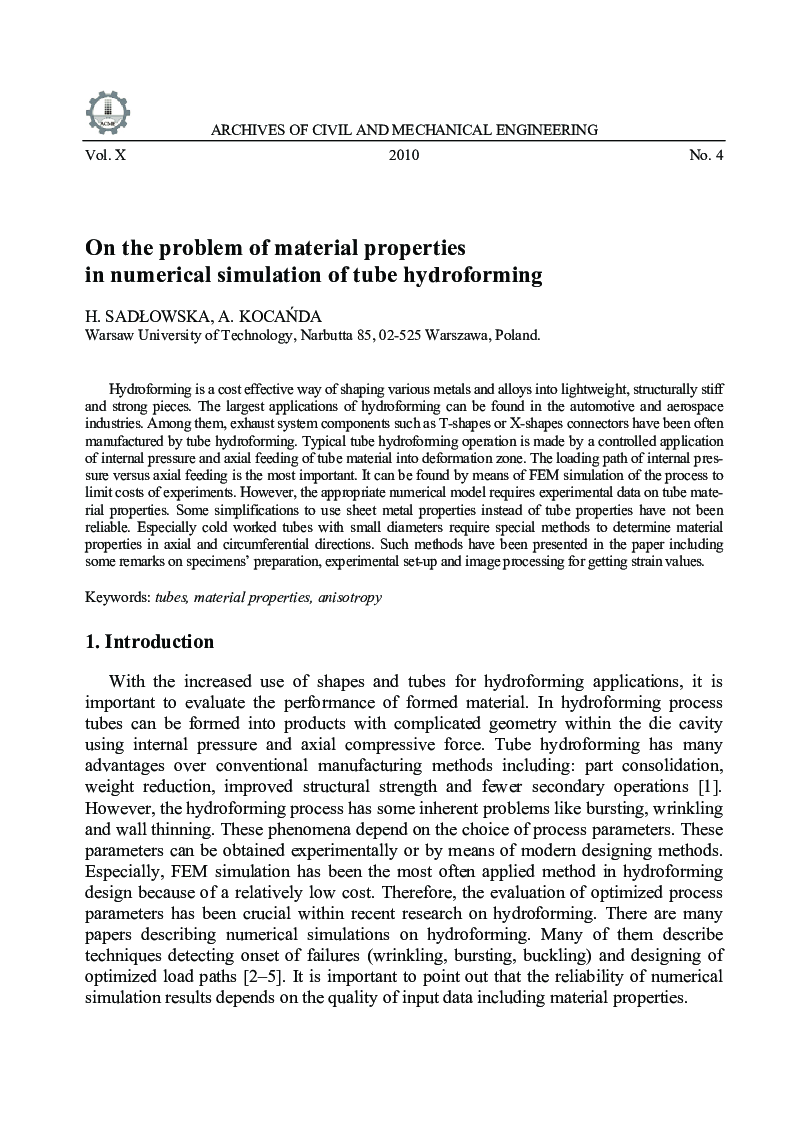| Article ID | Journal | Published Year | Pages | File Type |
|---|---|---|---|---|
| 245911 | Archives of Civil and Mechanical Engineering | 2010 | 7 Pages |
Hydroforming is a cost effective way of shaping various metals and alloys into lightweight, structurally stiff and strong pieces. The largest applications of hydroforming can be found in the automotive and aerospace industries. Among them, exhaust system components such as T-shapes or X-shapes connectors have been often manufactured by tube hydroforming. Typical tube hydroforming operation is made by a controlled application of internal pressure and axial feeding of tube material into deformation zone. The loading path of internal pressure versus axial feeding is the most important. It can be found by means of FEM simulation of the process to limit costs of experiments. However, the appropriate numerical model requires experimental data on tube material properties. Some simplifications to use sheet metal properties instead of tube properties have not been reliable. Especially cold worked tubes with small diameters require special methods to determine material properties in axial and circumferential directions. Such methods have been presented in the paper including some remarks on specimens' preparation, experimental set-up and image processing for getting strain values.
